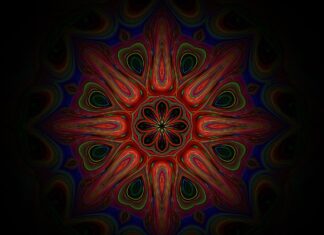Bodily, a term deeply entwined with the human experience, encapsulates the intricate and complex nature of the physical self. From the subtle nuances of bodily sensations to the profound impact of bodily expressions on identity and culture, the concept of “bodily” extends far beyond the mere physicality of our existence. In this exploration, we delve into the multifaceted dimensions of the term, examining its significance in the realms of biology, psychology, sociology, and the arts.
At its core, “Bodily” refers to anything related to the body—the tangible and corporeal aspect of an individual’s being. It encompasses the entirety of the physical form, from the microscopic intricacies of cells and tissues to the macroscopic expressions of movement, gesture, and posture. The term invites us to contemplate the unity of our physical selves and the ways in which our bodies serve as conduits for sensory experiences and self-expression. In the context of biology, the study of the bodily functions, organs, and systems unveils the remarkable complexity and sophistication of the human body, a marvel of nature’s design.
The concept of “Bodily” extends beyond the realm of pure anatomy, delving into the intricate interplay between the physical and psychological dimensions of human existence. Our bodies, in a perpetual dance with our minds, serve as vessels for emotions, thoughts, and consciousness. The intricate network of nerves and neurotransmitters facilitates the communication between body and mind, giving rise to the rich tapestry of sensory experiences that shape our perceptions of the world. From the tingling sensation of a gentle touch to the visceral response of a racing heartbeat, our bodily experiences are inseparable from our emotional and cognitive states.
In examining the concept of “Bodily,” it is essential to consider the cultural and societal dimensions that shape our perceptions of the physical self. Cultural norms, traditions, and societal expectations influence not only how we perceive our own bodies but also how we interpret and respond to the bodies of others. The significance attached to certain bodily features, expressions, and adornments varies across cultures, reflecting a complex interplay of historical, social, and aesthetic factors. This cultural lens invites us to question the construction of beauty ideals, the stigmatization of certain bodily attributes, and the diverse ways in which bodies are celebrated or marginalized.
The study of “Bodily” experiences intersects with disciplines such as psychology, exploring the profound impact of the body on mental health and well-being. The field of somatic psychology recognizes the inherent connection between the body and the psyche, acknowledging that bodily experiences can serve as gateways to healing and self-discovery. Practices such as somatic therapy and mindfulness emphasize the importance of attuning to bodily sensations, fostering a deeper understanding of the ways in which physical experiences can influence mental and emotional states.
From a sociological perspective, the concept of “Bodily” extends to the ways in which bodies become sites of social construction, identity formation, and power dynamics. Societal norms regarding gender, race, and class often manifest in the regulation and policing of bodies, reinforcing or challenging existing power structures. The body becomes a canvas upon which societal expectations are inscribed, and individuals navigate a complex interplay of agency and constraint in expressing their bodily identities. Discussions around bodily autonomy, consent, and bodily rights underscore the ongoing struggle for individuals to assert control over their own physical selves within societal frameworks.
In the realm of the arts, the concept of “Bodily” serves as a wellspring of inspiration and expression. Visual artists, dancers, performers, and writers alike draw upon the richness of bodily experiences to convey narratives, emotions, and abstract concepts. The body becomes a medium through which artists communicate, challenging audiences to contemplate the beauty, vulnerability, and resilience inherent in the human form. In dance, the language of the body transcends linguistic barriers, offering a visceral and emotive means of storytelling that resonates with audiences on a primal level.
The intersection of technology and the bodily experience introduces a new dimension to the concept of “Bodily.” Advancements in medical technology, prosthetics, and wearable devices not only enhance our understanding of the body’s functions but also afford individuals the opportunity to augment or modify their bodily experiences. The integration of virtual reality and augmented reality technologies further blurs the boundaries between the physical and virtual realms, inviting contemplation on the nature of embodiment in an increasingly digital age.
As we navigate the myriad facets of the “Bodily” experience, it becomes evident that our bodies serve as the locus of our existence, shaping and being shaped by the dynamic interplay of biological, psychological, cultural, and societal forces. The term transcends mere corporeality, inviting us to contemplate the profound interconnectedness of our physical selves with the broader tapestry of human experience. Recognizing the intricate dance between body and mind, the societal constructions that influence our perceptions, and the creative expressions that emanate from bodily experiences enriches our understanding of what it means to be embodied beings in a complex and ever-evolving world.
In contemplating the significance of “Bodily,” we are compelled to consider the ways in which our bodies contribute to our sense of self and identity. Our bodily experiences shape the narratives we construct about ourselves, influencing how we perceive our own strengths, vulnerabilities, and uniqueness. Moreover, the concept of “Bodily” invites us to reflect on the relationship between self-care and self-acceptance, recognizing the importance of nurturing a positive and compassionate connection with our physical selves. This introspective journey underscores the transformative power of embracing and honoring the complexity of our bodily experiences.
In conclusion, the concept of “Bodily” unfolds as a rich tapestry woven from the threads of biology, psychology, sociology, culture, and the arts. From the microscopic intricacies of cellular functions to the macroscopic expressions of cultural norms and individual identity, the term encompasses the entirety of the human physical experience. Through the exploration of bodily experiences, we gain insights into the interconnectedness of body and mind, the societal constructions that shape our perceptions, and the creative expressions that emanate from the wellspring of our physical selves. “Bodily” stands as a testament to the multifaceted nature of human existence, inviting contemplation, exploration, and a deep appreciation for the embodied journey we all traverse.


















